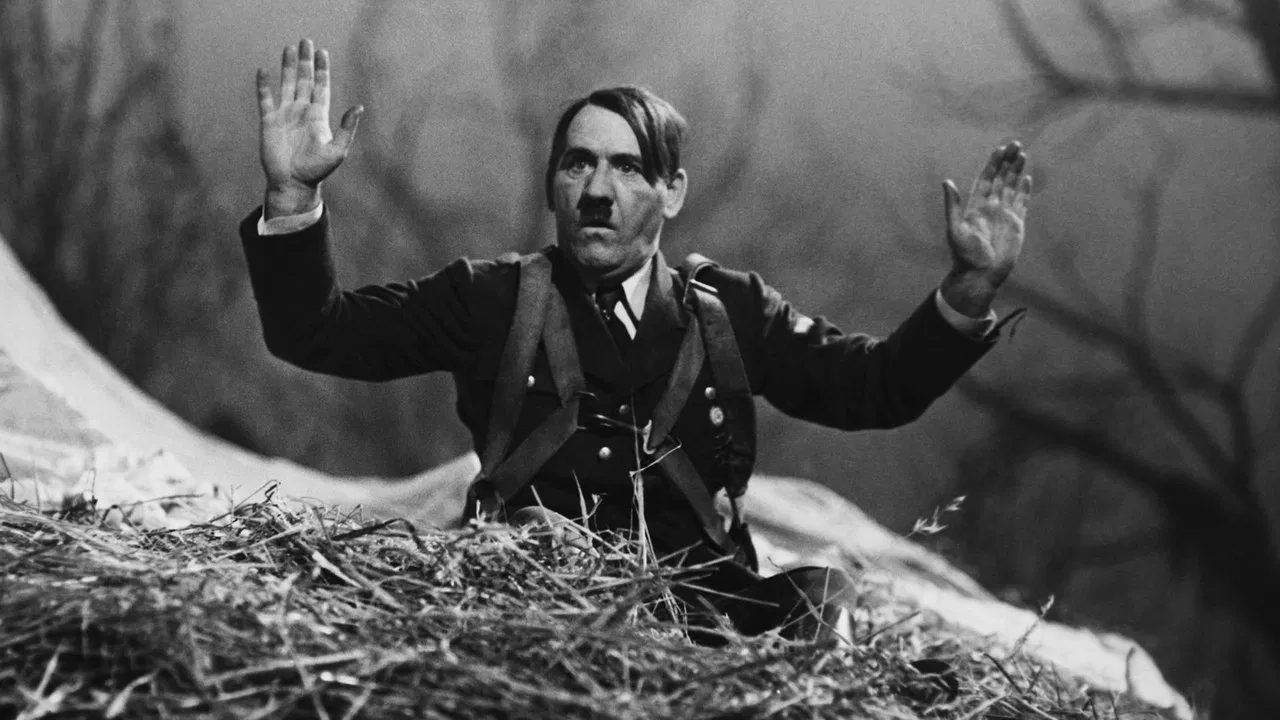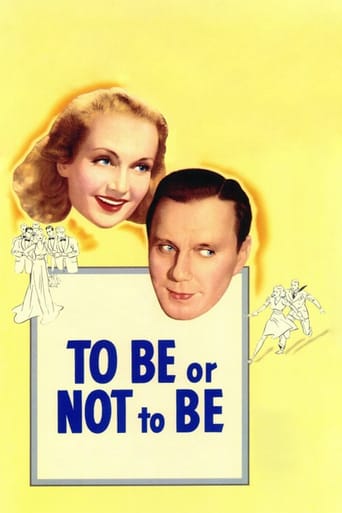

While I enjoy comedies, I was never one to "burst out with laughter" during any comedy film. That was, until I viewed 'To Be or Not to Be'. Simply put, this film does not hold back on its satirical humour of, not only Nazi Germans, but the theater/stage community and the extreme levels of passion many actors/actresses involve themselves in. Despite the heavy elements of satire, the humour never goes overboard into crude or absurd (compared to many satirical films of today). Every bit of humour, whether dialogue or action, is delivered perfectly and hits the right note. There are very few, if not none, "dud" moments. The acting is, of course, excellent, with each actor/actress giving off performances that make it seem as if the role were tailor-made for them (which appears to be the case for Jack Benny).After viewing this film, it is surprising to see that it is often excluded from many "Greatest Comedies of All-Time" lists, and may be overlooked. If you enjoy characters pretending to be others, finding themselves in awkward/precarious situations, and their attempts to squeeze their way out, you will find this film hilarious. Either way, it is a must-watch.10/10
... View MoreNever before had I seen Jack Benny perform as a younger man, he was quite handsome back in the day! This movie was pretty good, glad I watched it.
... View MoreInterestingly, when the serious and tragic theme of the Second World War used as the basis for a great comedy. From this point of view it is difficult to separate the horrors in people's lives and the way that fashioned this comedy. Comedy based on the tragedy is not entirely correct thesis. TO BE OR NOT TO BE is extremely brave, required and great project. The title is not a parody phrase from Shakespeare's works, but alluding to the existence and struggle for survival.Frivolous and inappropriate descriptions are that only correspond to the characteristics of the genre. Hilarious fun theater company in Warsaw trying to outwit the Nazis during the war. This is enough to man peed with laughter. Not pertinent, but it is necessary.The film can be seen as shocking joke, making fun of the Nazi approach and spectacle, but certainly not anti - Polish propaganda. The characters in the film do not cease to be what they are. They are actors. With good acting, improvisation, ingenuity and courage, winning terrible enemy.Carole Lombard as Maria Tura, an actress in Nazi-occupied Poland was a brave woman, an actress whom everyone admired, and we all know that the charm of a woman can be a powerful tool. The funny thing is in the film, no one can "break" other than her husband. Although, it is in this case quite helpless. Jack Benny as Joseph Tura, an actor and Maria's husband. He is "the first line" of ridicule. Uncertain is in itself and turns a fool several times. But in the end he shows to us his "great acting". Robert Stack as Lt. Stanislav Sobinski, a Polish airman in love with Maria is a handsome soldier and lover required in the script. Felix Bressart as Greenberg and Sig Ruman Col. Ehrhardt are hilarious. One wants a role because it is only created for her and the other for their mistakes "that can not be counted" always blame his servant.To be or not to be is fun movie. It has a hilarious story, great dialogue, acting and good scenery. I am aware of the other side, which may have the opposite impression. I think the aesthetic and spiritual this movie does not offend anyone who passed all the horrors of the Second World War.
... View MoreI wasn't familiar with Jack Benny going into this movie, other than his rep that said he couldn't cross over into film. I don't really see why, I thought he was quite capable and had a command of guises and disguises that weren't dissimilar from someone like Sacha Guitry. There can also be a connection made to Preston Sturges, with all the madcappery going on that still feels just as vital today. Some of the jokes could very well be inserted into an episode of The Simpsons and viewers wouldn't bat an eyelash. I loved seeing Robert Stack show up as a dippy flingy paramour. I think what impresses me most with To Be Or Not To Be is the sense of play throughout, and not just onstage. There are matters of love, life and death that are treated most often as debonair or romantic whimsy. A farce about humanity's greatest threat. IN YOUR FACE, Hitler
... View More